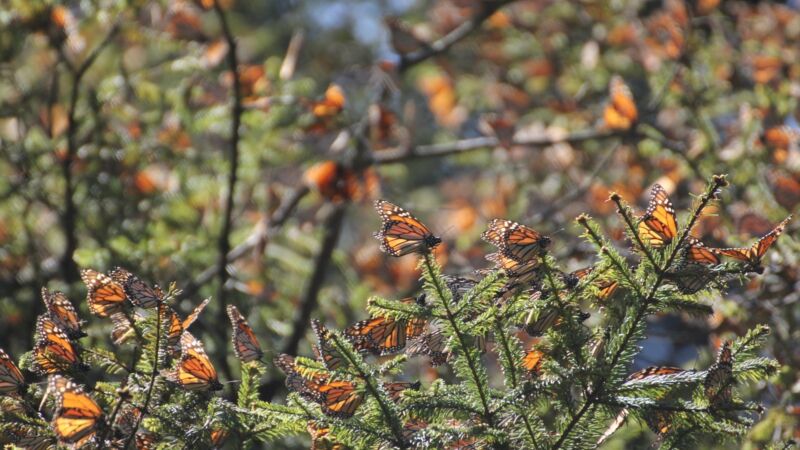
This content is translated from the WWF-Mexico News Release, originally in Spanish (click here for English version).
Scientists estimate 2.83 hectares of North American monarchs overwintering in Mexico during 2019-2020, announced today by WWF- Mexico and the Comisión Nacional de Áreas Naturales Protegidas (CONANP). The forest area occupied by monarch butterflies represents a 53.22 percent decrease compared to last year. Eleven (11) monarch butterfly colonies were located and assessed during late December 2019; three of these were located in Michoacan and eight in the State of Mexico. Most of the area occupied (2.46 hectares) was located within the Monarch Butterfly Biosphere Reserve with only 0.37 hectares outside.

Data from 1994-2003 were collected by personnel of the Monarch Butterfly Biosphere Reserve (MBBR) of the National Commission of Protected Natural Areas (CONANP) in Mexico. Data from 2004-2020 were collected by the WWF-Telcel Alliance, in coordination with the Directorate of the MBBR. 2000-01 population number as reported by Garcia-Serrano et. al (The Monarch Butterfly: Biology and Conservation, 2004).
While many were predicting a small decrease for the eastern population, this represents a more significant decline than expected. Read more about Dr. Chip Taylor’s prognosis here. With habitat availability continuing to be a severe limiting factor, and severe weather increasing in frequency and variability, our efforts are critical to restore this population to a sustainable level. Thus, our message remains the same -- efforts to create, enhance, and protect habitat for monarchs and pollinators must be scaled up. Each and every person can make a difference for monarchs in some way. Creating habitat, educating others, contributing data to citizen science programs, and advocating for the protection of wild spaces are some of the important actions you can take to help the monarch population recover and sustain their remarkable migration. Groups and individuals can find more information about getting involved on the Monarch Joint Venture website.
The Monarch Joint Venture is a national partnership of federal and state agencies, non-governmental organizations, businesses and academic programs working together to conserve the monarch butterfly migration. The content in this article does not necessarily reflect the positions of all Monarch Joint Venture partners. Header photo taken by Wendy Caldwell.
